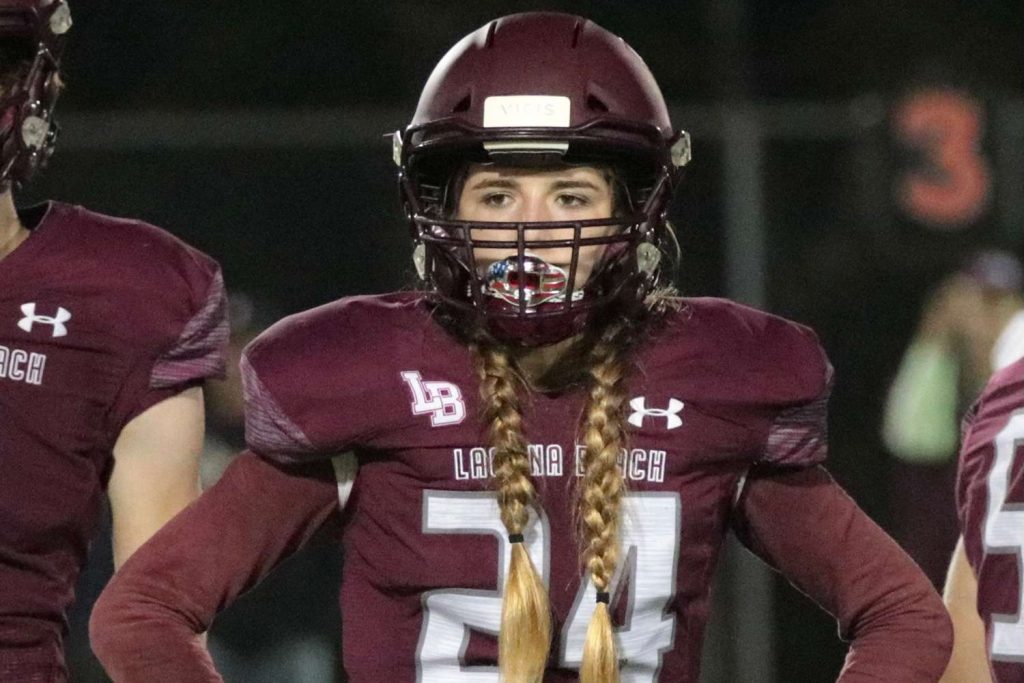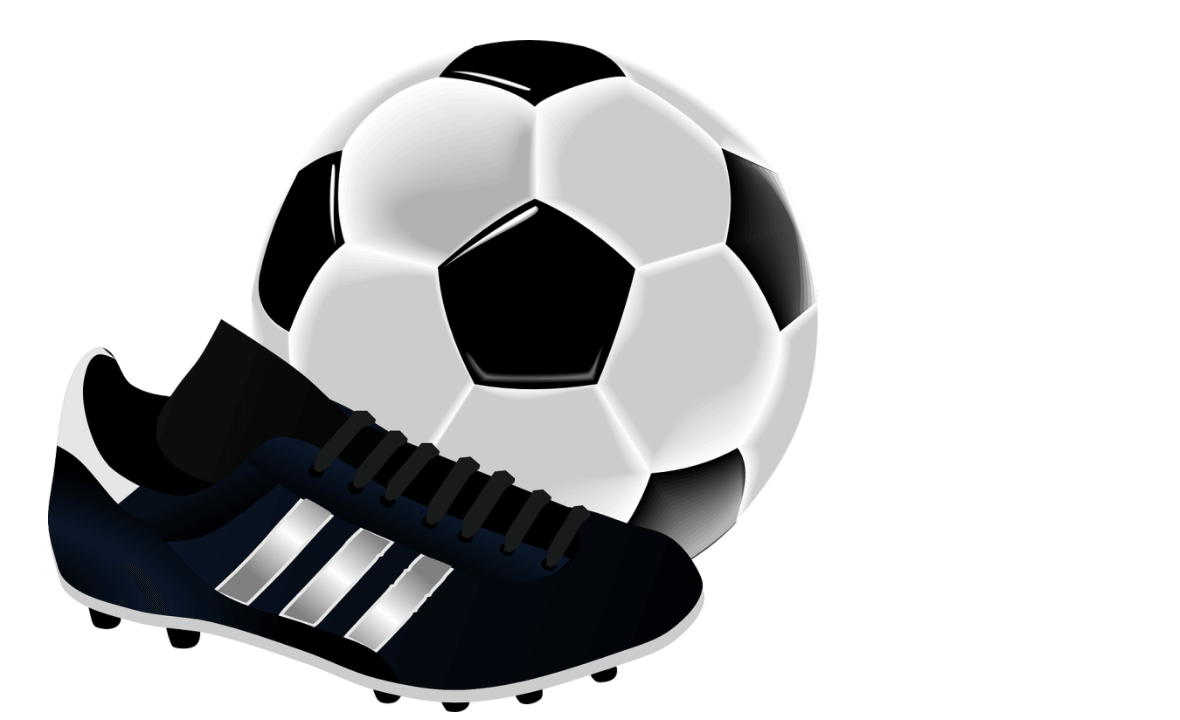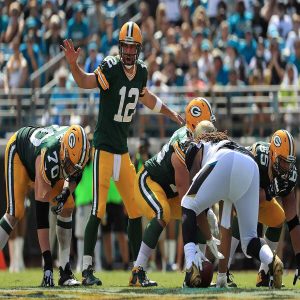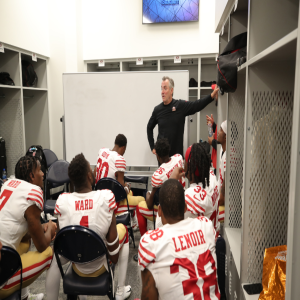I. Introduction
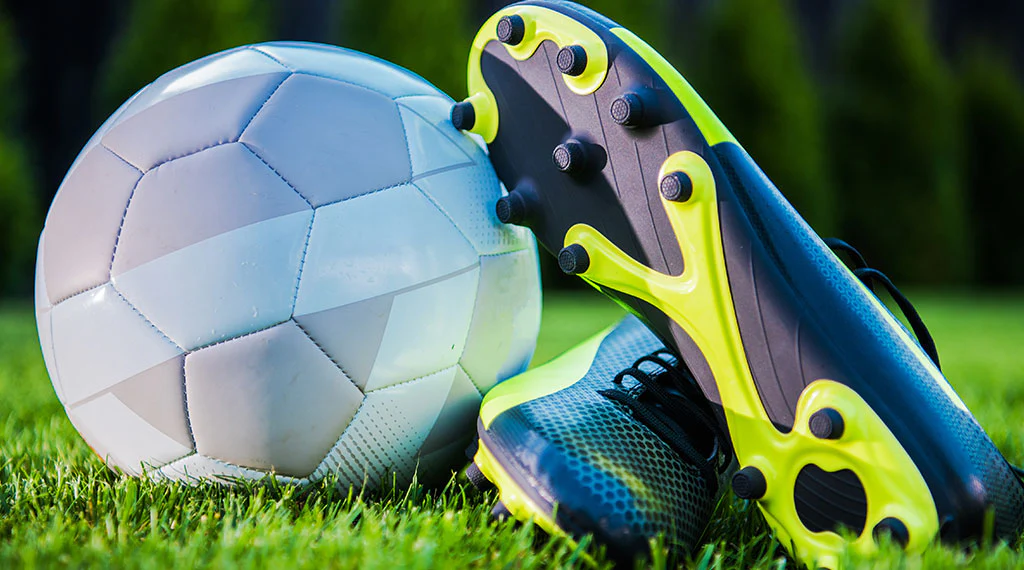
Proper gear is essential in football to ensure the safety and well-being of players. In this article, we will explore the importance of wearing the correct gear and delve into the specific equipment used in the sport. The aim of this article is to educate football players, coaches, and fans about the significance of having the right gear and understanding how to properly utilize and maintain it.
II. Protective Equipment
A. Helmets
Helmets are perhaps the most critical piece of protective equipment in football. They are designed to protect the head, which is susceptible to injuries such as concussions. The primary function of a football helmet is to absorb and dissipate the force of impact, reducing the likelihood of head injuries.
Football helmets are comprised of several key components. The outer shell is usually made from a durable plastic material that can withstand high-impact collisions. Inside the helmet, there is padding, typically made from foam, which provides comfort and extra protection. Additionally, there is a face mask, which is attached to the helmet to protect the player’s face and eyes. Face masks are made from various metals or other strong materials.
Helmets must meet specific safety standards and regulations set by organizations such as the National Operating Committee on Standards for Athletic Equipment (NOCSAE). These standards ensure that helmets provide adequate protection and are tested for their ability to absorb impact.
B. Shoulder Pads
Shoulder pads play a crucial role in protecting the upper body, particularly the shoulders and chest, which can endure significant impact during tackles and collisions. The purpose of shoulder pads is to disperse the force of impact across a larger surface area, reducing the risk of injury.
There are different types of shoulder pads available for football players, each designed for specific positions and playing styles. For example, offensive linemen typically wear larger, bulkier shoulder pads that offer greater protection, while wide receivers might opt for smaller, lighter pads that allow for better maneuverability.
Proper fitting and maintenance of shoulder pads are essential to ensure optimal protection. Shoulder pads should fit snugly but comfortably, allowing for freedom of movement. Regular inspection for wear and tear, such as loose or damaged padding, is crucial to maintaining the effectiveness of the equipment.
C. Leg Protection and Padding
Leg protection is vital in football, as players frequently engage in blocking, tackling, and running, which puts their lower body at risk of injury. Knee pads, thigh pads, and hip pads are commonly used to provide added protection.
Knee pads are worn over the knees to protect the joint from direct impact or collision with the ground. They typically consist of a foam or gel padding encased in a fabric sleeve. Thigh pads are worn on the upper leg to absorb impact during blocking or tackling. Like knee pads, they are made from soft foam or gel lining and covered by a fabric sleeve.
Hip pads protect the bony areas of the hips from impact during falls or hits. They are usually made with a combination of foam and plastic or hard shell materials. Proper usage and maintenance of leg padding involve ensuring they are secure and adequately covering the intended areas. Regular inspection for any signs of damage or wear is crucial.
III. Clothing and Footwear
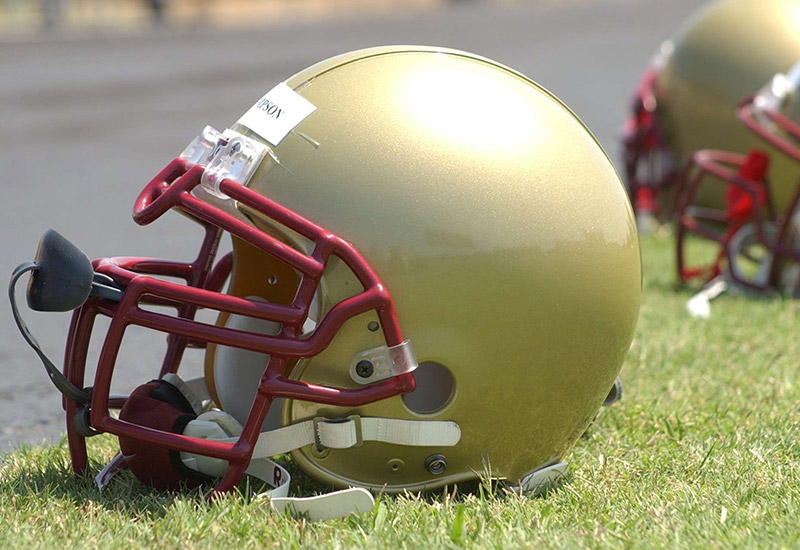
A. Jerseys and Pants
Football jerseys are iconic and unique in their design, often bearing the team’s colors, logo, and player number. This uniform not only distinguishes players on the field but also serves functional purposes. Football jerseys are typically made from lightweight, breathable materials that allow for ventilation and moisture-wicking. This keeps players cool and comfortable throughout the game. Additionally, jerseys often have reinforced stitching in high-stress areas to withstand the physical demands of the sport.
Football pants are designed to provide mobility, flexibility, and protection to players. They are usually made from durable materials such as nylon or polyester, providing resistance to tearing or ripping. Many football pants come equipped with built-in padding on the hips, thighs, and knees to absorb impact during tackles or falls. The padding is typically made from foam or other shock-absorbing materials, encased within a pocket or sleeve in the pants.
It is essential for football players to wear clothing that fits properly and allows for ease of movement. Tight-fitting jerseys and pants can restrict mobility, while loose-fitting ones may impede speed and agility. Furthermore, the use of moisture-wicking fabrics helps to keep players dry and comfortable, reducing the risk of chafing and irritation.
B. Cleats
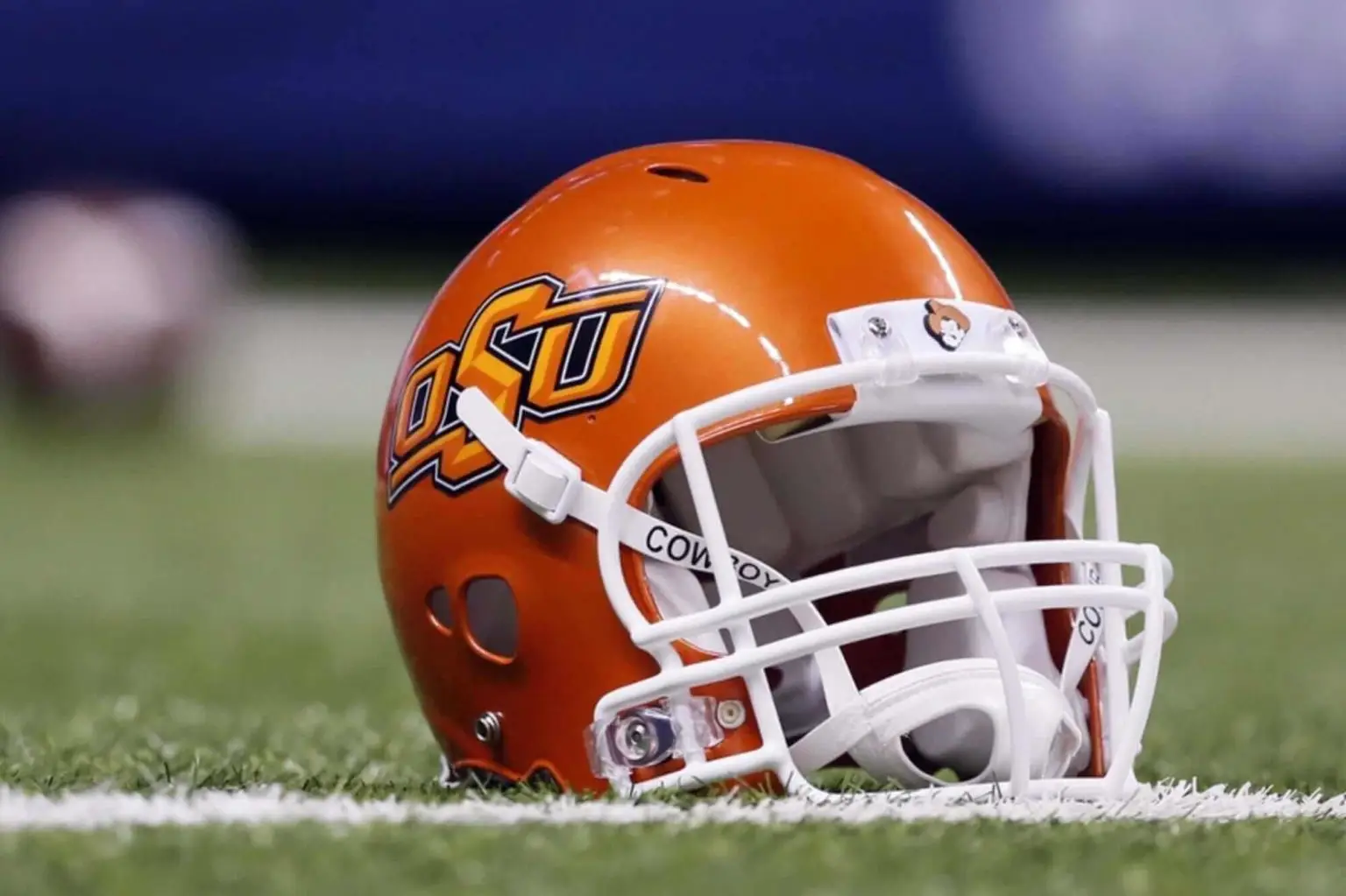
Cleats are an integral part of a football player’s footwear. They provide traction and stability on the playing surface, allowing players to make quick turns, cuts, and accelerations. Cleats are typically made with studs or spikes on the outsole, which dig into the ground to prevent slipping.
There are different types of cleats available for various playing conditions. For natural grass surfaces, molded cleats with permanent studs are commonly used. These provide excellent traction and stability. Alternatively, removable studs are popular for wet or muddy grounds, as they can be changed depending on the conditions. Turf cleats, featuring shorter, rubberized studs, are designed specifically for artificial turf surfaces, providing sufficient traction without damaging the playing surface.
Proper fitting and maintenance of cleats is crucial to ensure optimal performance and reduce the risk of injuries. Cleats should fit securely, but not so tight that they cause discomfort or restrict movement. Additionally, regular inspection for any signs of damage, including worn-out studs or torn outsoles, is essential to ensure cleats are in good condition.
IV. Accessories and Extras
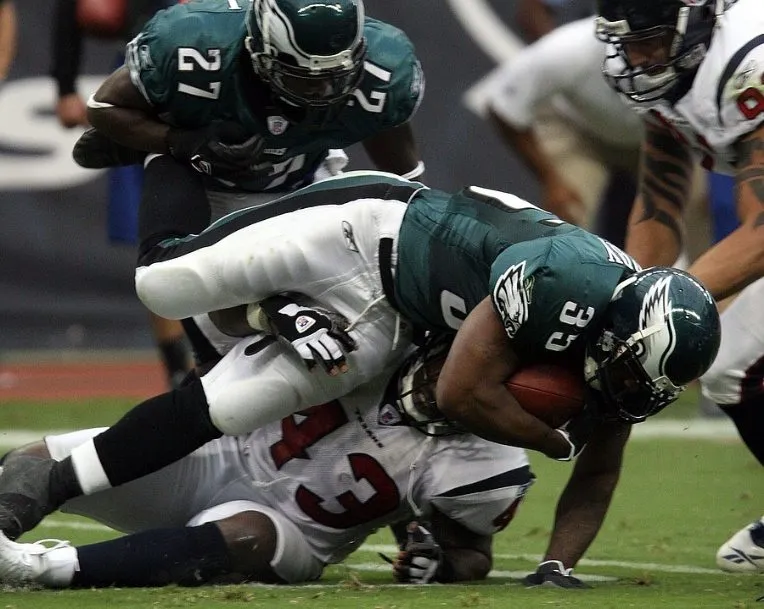
A. Mouthguards
Mouthguards are vital accessories for football players as they provide protection for the teeth, gums, and jaw during high-impact collisions. They are typically made from a durable, flexible material that molds to the shape of the player’s mouth for a comfortable fit. Mouthguards help absorb and distribute the force of impact, reducing the risk of dental injuries such as broken teeth or lacerations.
There are three main types of mouthguards available: stock mouthguards, boil-and-bite mouthguards, and custom-made mouthguards. Stock mouthguards are pre-formed and ready to use but may not offer the best fit. Boil-and-bite mouthguards can be shaped by immersing them in hot water and then molding them to the player’s teeth and bite. Custom-made mouthguards, generally the most expensive option, are made by dental professionals using molds of the player’s mouth to ensure a precise fit.
Proper fitting and maintenance of mouthguards involve following the manufacturer’s instructions and regularly checking for any signs of wear, such as tears or distortion. Additionally, cleaning the mouthguard after each use is essential to maintain hygiene.
B. Gloves
Football gloves have become increasingly popular among players in recent years. They offer several benefits, including improved grip, protection against abrasions, and added warmth in cold weather. Gloves are particularly useful for wide receivers and defensive players who need to catch or intercept the ball.
There are different types of gloves designed for various positions and playing styles. For example, skill position players, such as wide receivers or running backs, often use receiver gloves that have sticky palm surfaces for enhanced grip. Linemen gloves, on the other hand, prioritize protection and grip against opposing players.
Proper care and selection of football gloves are essential to maintain their effectiveness. Gloves should fit snugly but not restrict movement or blood circulation. Regular cleaning, typically by hand in mild soapy water, is necessary to remove dirt and sweat buildup. Additionally, gloves should be inspected for any signs of wear, including loose or torn stitching, and replaced when necessary.
C. Other Equipment
Additional accessories and extras are often used by football players to enhance performance and convenience during games. Some of these include:
- Eye shields and visors: These attachments for helmets provide protection against the sun, glare, and potential eye injuries. They are made from shatterproof materials and come in various tints or colors.
- Wristbands and armbands: Wristbands soak up sweat and help keep players’ hands dry, enhancing grip. Armbands often serve as a fashion statement or a way to support causes.
- Towels and hydration gear: Towels are commonly used by players to wipe away sweat or moisture during the game. Hydration gear includes water bottles or hydration packs to ensure players stay well-hydrated during intense physical activity.
In conclusion, proper clothing and footwear are essential in football to enhance performance and protect players from injuries. Football jerseys and pants should be made from breathable materials, providing comfort and resistance against physical stress. Cleats, designed for specific playing surfaces, offer traction and stability. Accessories such as mouthguards, gloves, and various extras serve important functions in ensuring the safety and well-being of football players. Understanding how to properly select, use, and maintain this gear is crucial for players, coaches, and fans alike.
